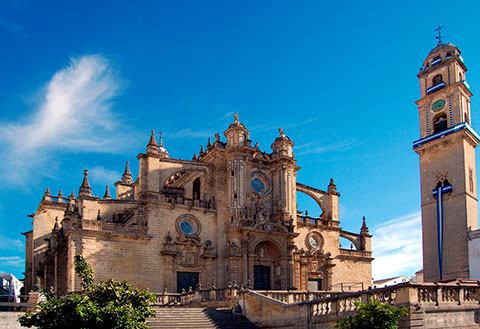Andalucia is split up by the Sierra Morena and the Betic Cordillera. The Betic Depression can be felt in the middle of this, which charecterises Seville with boiling summers. Other mountain regions are green, such as El Bosque de la Niebla.
Underneath I will discuss the climate of some interesting regions.
In Cádiz the weather is always mild, because of its climate. Thanks to the Mediterranean climate on the Atlantic coast all these regions are mild and it is almost never raining. The coldest it gets in Cadiz is 10 degrees in January. In July until September it could easily get 28 degrees, which is perfect for a summer holidays at the sea.

Jerez de la Frontera is one of the most pretty cities in Andalucia. Unfortunately, it can get a little colder than in Cádiz. On the contrary, in summer it will get hotter than at the sea. It gets the coldest in January, with a minimum of 5 degrees. From July until September it can be 33 degrees, which is way more hotter than in Cádiz.
This is a city that you can visit all year through, if you can cope with some heat during summer. What I love about Seville, is that it never freezes or feels cold. To help you choosing the right timing to visit Seville, please read this fun blog. The coldest temperatures you will get in the city will be the same as in Jerez, also during January. The hottest it can get is from July until September, 45 degrees maximum! So you will be glad to have a swimming pool in summer.
In this city , you can compare the temperatures to those of Seville, only in winter it can get a bit colder and in summer a little warmer.
If you go all the way south to the sea, you arrive in Algeciras. The coldest it gets is in January and February, 11 degrees. In July and August you will be able to get your perfect tan with a maximuum of 28 degrees.
If you are planning to visit Andalusia in during summer, you should definately read this blog! You will optimize your trip with this tips.